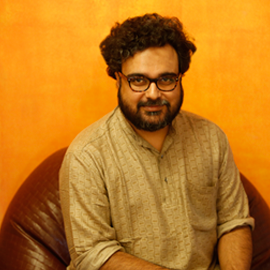UP polls: Is Amit Shah repeating the mistakes his party made in Bihar?

Unlike Prime Minister Narendra Modi, who has avoided attacking the Uttar Pradesh government directly, BJP president Amit Shah is taking a strong line against the Akhilesh Yadav led state government.
It is quite understandable for a party which is trying to capture power in the state, to attack the incumbent.
Also read - BJP steps up Dalit-wooing, but avoids direct scrap with Mayawati
Amit Shah was trying to do the same when he addressed a press conference in Lucknow on Tuesday. However, this is not entirely helping the BJP. Amit Shah might be repeating the same mistake his party committed in Bihar during last year's Assembly elections there.
So far the BJP's face in its UP campaign has been Shah or PM Modi himself. Rajnath Singh and other leaders have been present on the stage but they appeared merely as co-actors in the script.
In the last couple of months, many of Modi's ministers have been visiting the state frequently to propagate the work done by the central government so far. However, the main protagonists of the campaign remain Modi and Shah.
Amit Shah has now begun firing his cannons at the fort of the sitting CM. He says that the government lacks vision, that no development has taken place in the state and that the people have been cheated.
Wrong strategy?
But is it a good strategy for the party president to attack the state government directly? Party insiders believe that this is not the right approach.
"Look at the mistakes we made in Bihar. They (Nitish Kumar's alliance) painted it as a Bihari versus Bahari (outsiders) fight. This could be repeated in UP if we undermine leaders from the state," a BJP source said.
He elaborates further, "Our strength in states like Assam was the importance given to the local leadership. What went against us in Delhi and Bihar was that the state leadership wasn't at the forefront. This harmed the image of the party. In UP, regional leadership should engage more with the voters than the national leadership".
But as things stand today, the BJP has only two faces in UP - Modi and Shah. There has been no decision to project a chief ministerial face in the state as yet. This is no different from the situation in Bihar.
"Based on experience, going to elections in a big state like UP without giving prominence to local leaders, is not a good idea," the leader adds.
There are reasons why Amit Shah is attacking the Samajwadi Party government. It is crucial for the party to make it a BJP versus SP election and keep Mayawati away from the fight.
This suits the SP as well as the party would want to project itself as the BJP's only opponent in the state.
Therefore both BJP and SP are trying to keep Mayawati away from their rhetoric and weaken the public perception about her winnability.
So Amit Shah might be pursuing an important part of the BJP's strategy in the state. But in doing so, he is ending up alienating state level leaders, which might harm the party's prospects.
The sooner the BJP president understands this, the better.
More in Catch - Battleground UP: how Mayawati is laying the groundwork for 2017
Narendra Modi sounds UP poll bugle with anniversary rally in Saharanpur
First published: 10 June 2016, 12:37 IST






![BJP's Kapil Mishra recreates Shankar Mahadevan’s ‘Breathless’ song to highlight Delhi pollution [WATCH] BJP's Kapil Mishra recreates Shankar Mahadevan’s ‘Breathless’ song to highlight Delhi pollution [WATCH]](https://images.catchnews.com/upload/2022/11/03/kapil-mishra_240884_300x172.png)

![Anupam Kher shares pictures of his toned body on 67th birthday [MUST SEE] Anupam Kher shares pictures of his toned body on 67th birthday [MUST SEE]](https://images.catchnews.com/upload/2022/03/07/Anupam_kher_231145_300x172.jpg)






